2023/31/05 Essay: Mnemotechnics: Digital Epistemologies and the Techno-Politics of Archiving a Revolution
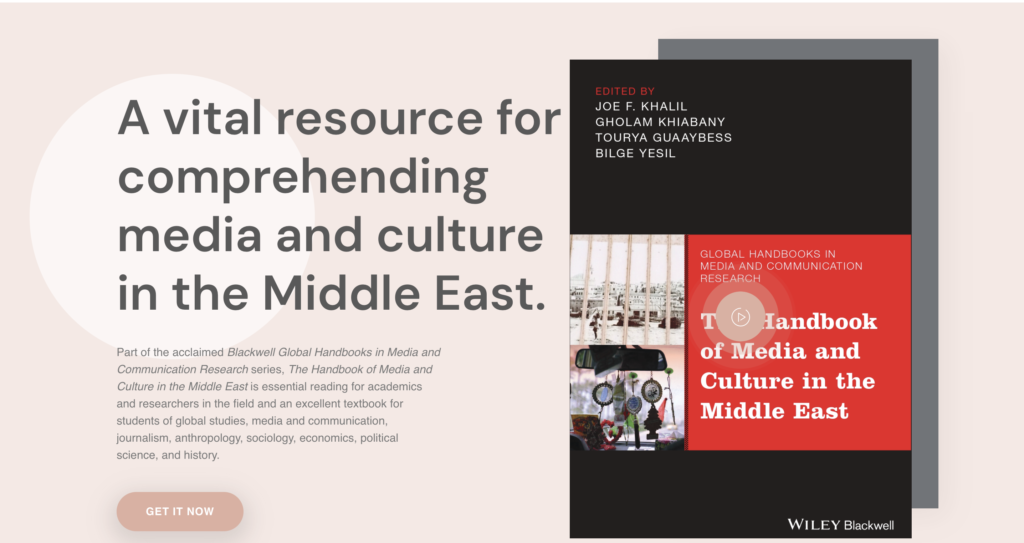
To read the full essay, see here

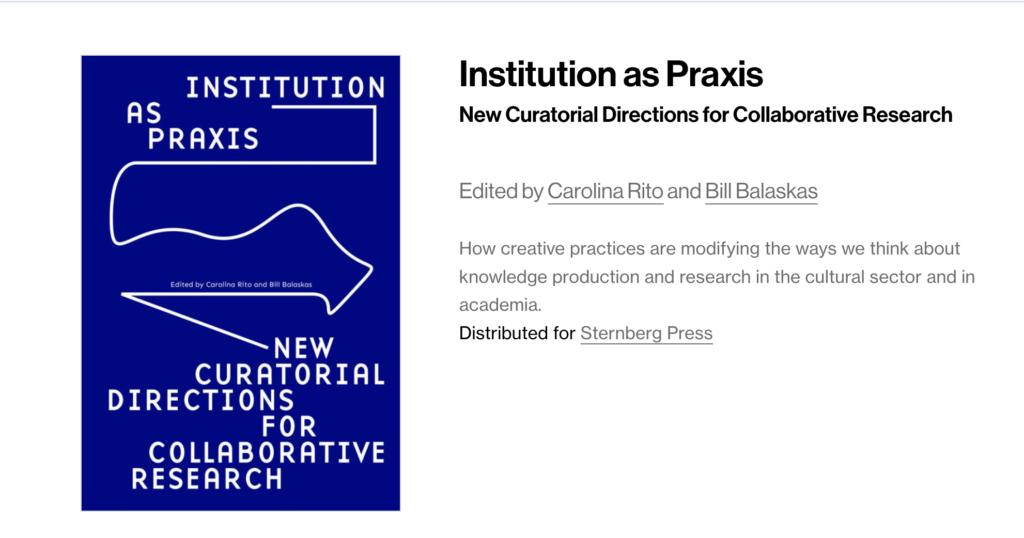
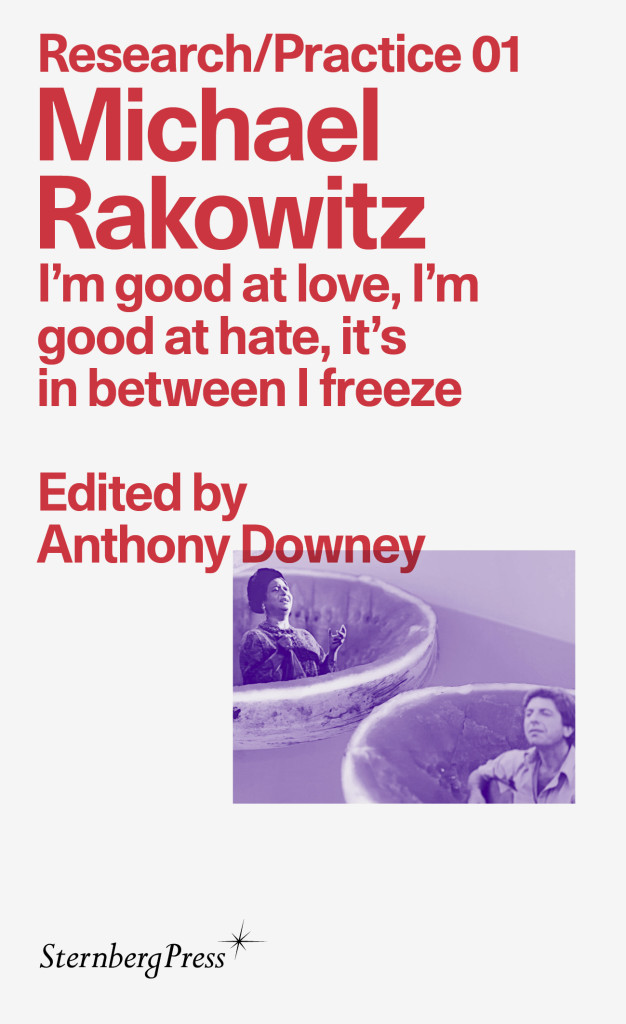
Research/Practice 01: Michael Rakowitz: I’m good at love, I’m good at hate, it’s in between I freeze (Sternberg Press: Berlin and New York, 2019)
Michael Rakowitz’s project I’m good at love, I’m good at hate, it’s in between I freeze (2009–ongoing) charts the historical context and aftermath of a concert that never happened. In 2009 Leonard Cohen was scheduled to perform in Israel. Because of increasing pressure from pro-Palestinian voices to dissuade Cohen from performing in Israel, a twin event in Palestine was organized. Amid protests and claims that the latter concert was a token show of solidarity and a hollow attempt to appease demonstrators, a cultural boycott of Israel was put in place and the concert was canceled. But the story, as Rakowitz’s work demonstrates, did not end there. Conjoining the cultural histories of Palestine and Israel with the ethical dilemmas faced by performers under the conditions of a boycott, this volume, the first in the Research/Practice series, brings to light the research that went into this multifaceted work and plots the future arc of its trajectory.
Edited by Anthony Downey, Research/Practice focuses on artistic research and how it contributes to the formation of experimental knowledge systems. Drawing on preliminary material such as diaries, notebooks, audiovisual content, digital and social media, informal communications, and abandoned drafts of projects, the series examines the interdisciplinary methods that artists employ in their practices. Each volume endeavors to ask: In their often speculative and yet purposeful approach to research, what forms of innovative knowledge do artists produce?
For full details of the volume see here: MIT Press: I’m good at love, I’m good at hate, it’s in between I freeze
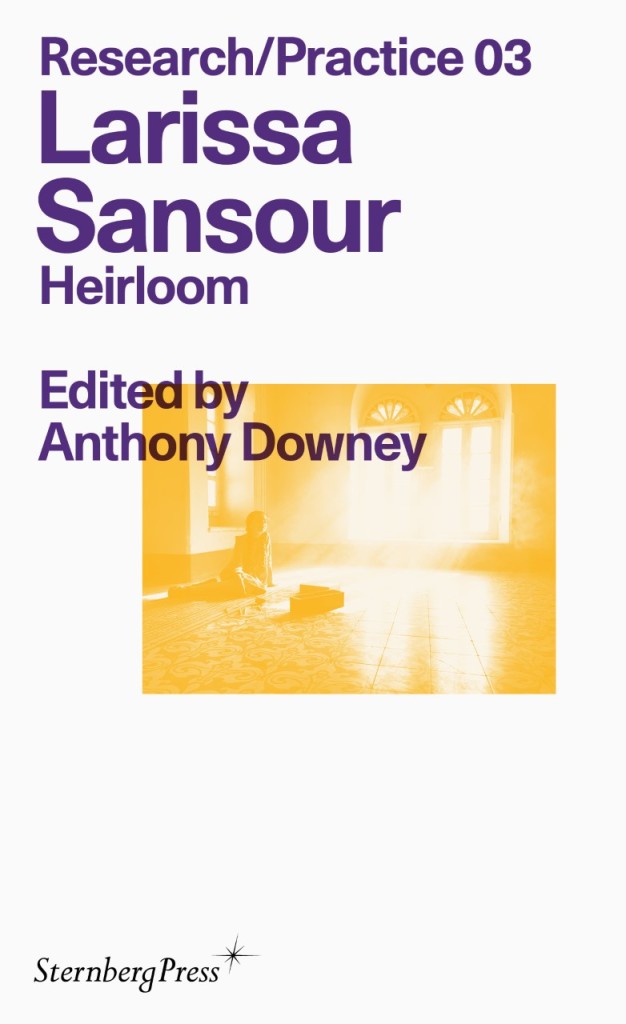
Heirloom documents the development of the artistic research for Palestinian artist Larissa Sansour’s project for the Danish Pavilion at the 58th Venice Biennale. It explores how recurrent notions in Sansour’s oeuvre, such as memory, trauma, identity, epigenetics, and belonging, intertwine with the discourses of science fiction and environmental disaster narratives. The volume also examines what it means to produce work from within contested geographies, specifically considering how, through research and the process of production, the artist grapples with complex issues of national representation. In keeping with the focus in this series on the research that informs the elaboration of an artist’s work over time, the material for this publication has been collated in parallel with its development over the past year.
Edited by Anthony Downey, Research/Practice focuses on artistic research and how it contributes to the formation of experimental knowledge systems. Drawing on preliminary material such as diaries, notebooks, audiovisual content, digital and social media, informal communications, and abandoned drafts of projects, the series examines the interdisciplinary methods that artists employ in their practices. Each volume endeavors to ask: In their often speculative and yet purposeful approach to research, what forms of innovative knowledge do artists produce?
For full details of the volume see here: https://mitpress.mit.edu/books/heirloom
For full details of the book launch see here: https://copenhagencontemporary.org/en/event/cc-opening-larissa-sansour/
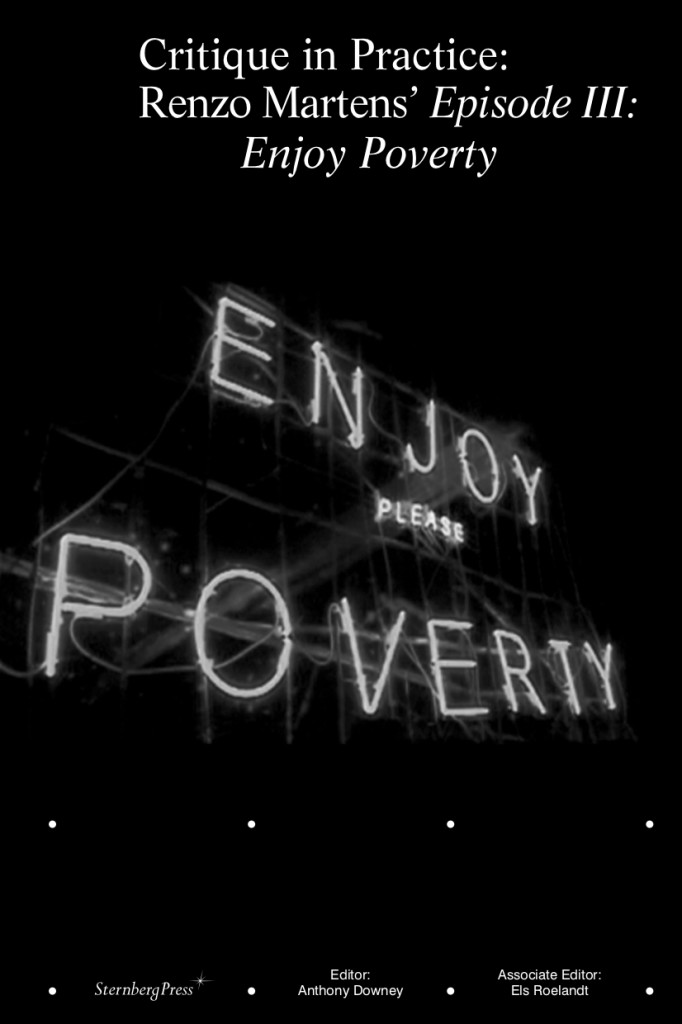
To read Anthony Downey’s introduction to this volume, see here
To read Anthony Downey’s essay, “Is There a Right Way to Do Wrong: Enjoy Poverty and the Case Against Ethics”, see here
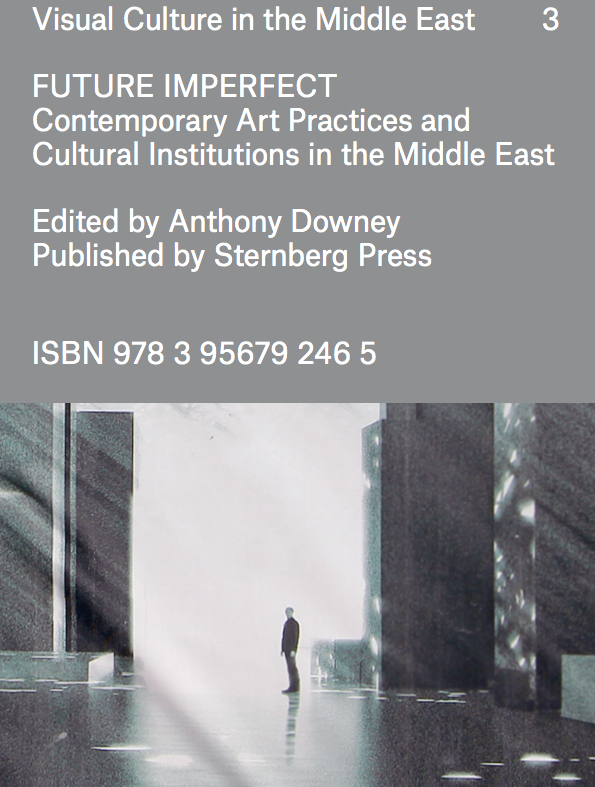
Future Imperfect: Contemporary Art Practices and Cultural Institutions in the Middle East (2017) edited by Anthony Downey
Rawan Sharaf Khatib
This volume is an extensive anthology that investigates the history and current politics of cultural institutions and production in the Middle East. It is the latest addition to the series ‘Visual Culture in the Middle East’ published by Ibraaz, and was preceded by Uncommon Grounds: New Media and Critical Practices in North Africa and the Middle East (2014) and Dissonant Archives: Contemporary Visual Culture and Contested Narratives in the Middle East (2015). The series, which is based on questions raised in Ibraaz’s ‘Platforms for discussion’, attempts to interpret and comprehend how the accelerated regional upheaval, with the social and economic breakdown caused by revolutions, counter-revolutions and civil wars, has echoed in visual and cultural practices in terms of responses to the specific antagonisms, and the developing of alternative structures and models of production while operating in precarious political conditions. And how, simultaneously, cultural production in the region is influenced by the global cultural economy, and perhaps even co-opted, or at least driven by, the politics and parameters of a globalised art market.
For the full review see Third Text online review here.
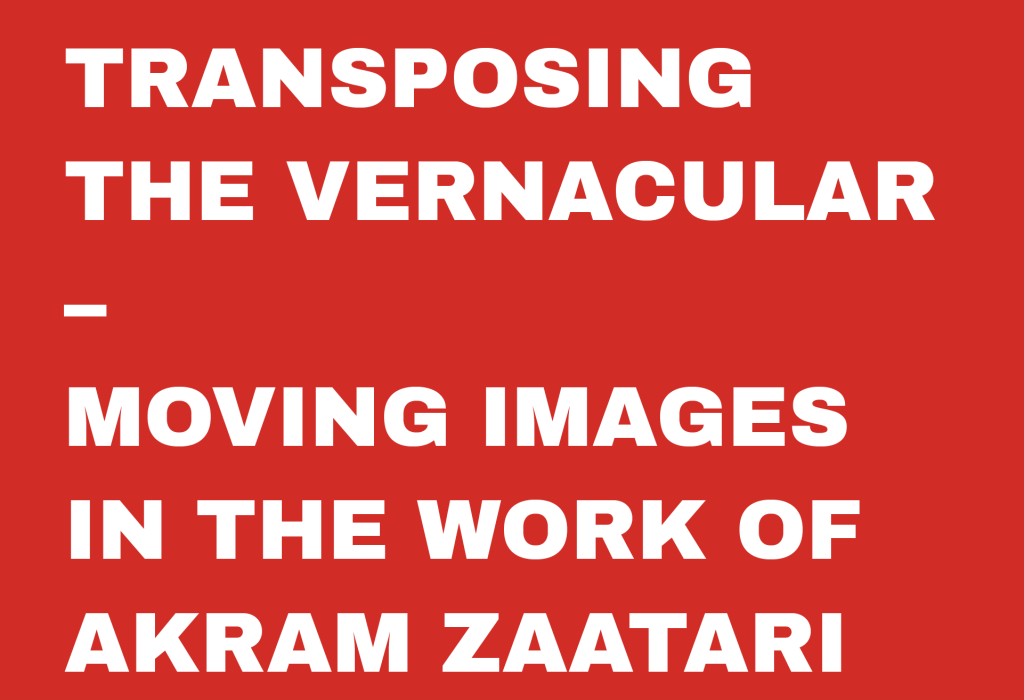
“The internet has effected an unprecedented historical instance of accelerated image production that has fundamentally realigned the way we view, understand, and disseminate moving images. This may appear to be a truism of sorts but it is currently estimated that over 400 hours of video is uploaded to YouTube every minute. Although it is the second most popular website in the world, this still needs to be put into perspective: if we extrapolate, this means that 24,000 hours of video is uploaded to YouTube every hour which is the equivalent of over half a million hours of footage being uploaded every day. Although it is the second most popular website in the world, this still needs to be put into perspective: if we extrapolate, this means that 24,000 hours of video is uploaded to YouTube every hour which is the equivalent of over half a million hours of footage being uploaded every day.”
To ready the full essay, please click here.
“Transposing the Vernacular: Moving Images in the Work of Akram Zaatari”, is catalogue essay published on the occasion of Akram Zaatari’s touring show, The Script, launched at the New Art Exchange (13 July — 9 September 2018). It toured to Turner Contemporary (19 October 2018 — 6 January 2019), and Modern Art Oxford (23 March — 2 May 2019).
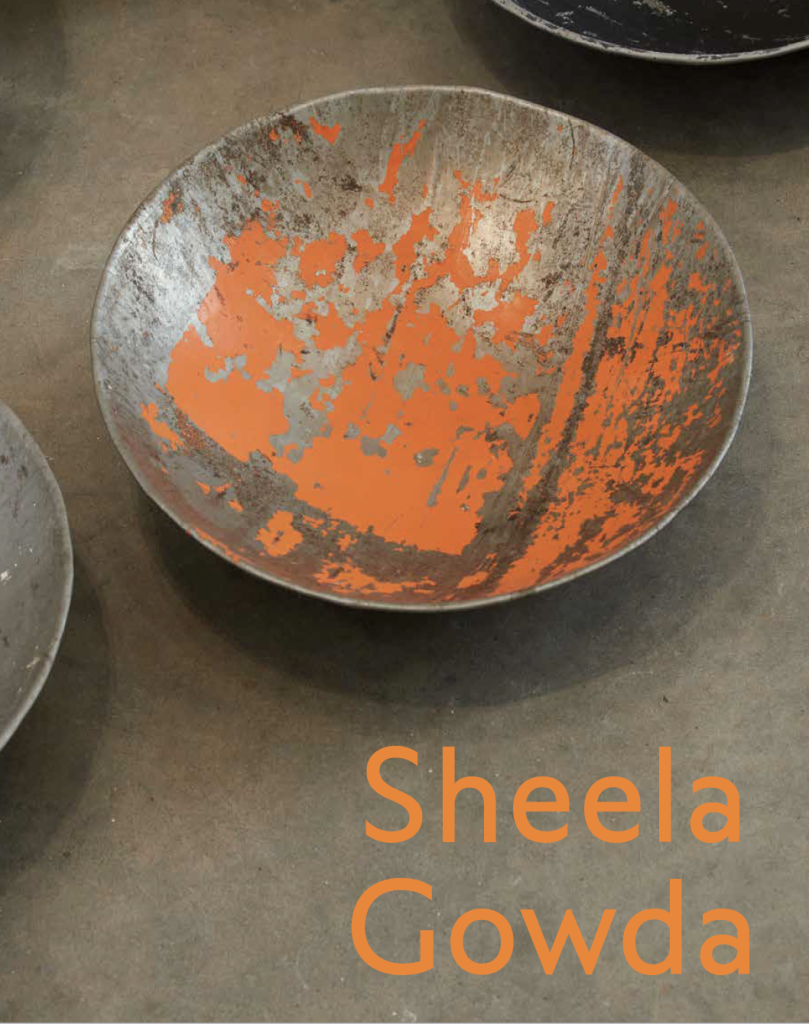
“On 2 March 2012, the precincts of the City Civil Court in Bangalore, erupted into mayhem as a pitched battle broke out between members of the judiciary and local media groups. These skirmishes quickly degenerated into acts of vandalism and the local police force waded in with a lathi-charge — or baton charge — to restore order. Three months before these events, the same judicial advocates had staged a boycott of the courts, following an unprovoked attack on one of their members by police. This attack was part of a pattern of intimidation and harassment that, as far as the judiciary were concerned, was impeding their ability to carry out their duties. Infuriated by police harassment and, at the time, the adverse media coverage of their strike (which they considered both legitimate and necessary), the judiciary turned their anger towards the media”.
To read full essay, please click here
“Where to Now: Imminent Impermanence in the Work of Sheela Gowda”, is a catalogue essay published on the occasion of Sheela Gowda, Ikon Gallery, November 2017.
An edited version of this essay, also titled “Where to Now: Imminent Impermanence in the Work of Sheela Gowda”, was included in the exhibition catalogue for Sheela Gowda’s retrospective show, Remains, at Fondazione Pirelli HangarBicocca, Milan, April 4th to September 15th, 2019, with other critical essays by art historian Geeta Kapur and writer and curator Pablo Lafuente, a text on the show by the curators as well as well as contributions by Roger M. Buergel, Grant Watson, Abhishek Hazra, Jessica Morgan, Zehra Jumabhoy, Marta Kuzma and Tobias Ostrander.
In October 2019 an adapted version of this show will travel to Bombas Gens Centre d’Art, Valencia.
May 2017
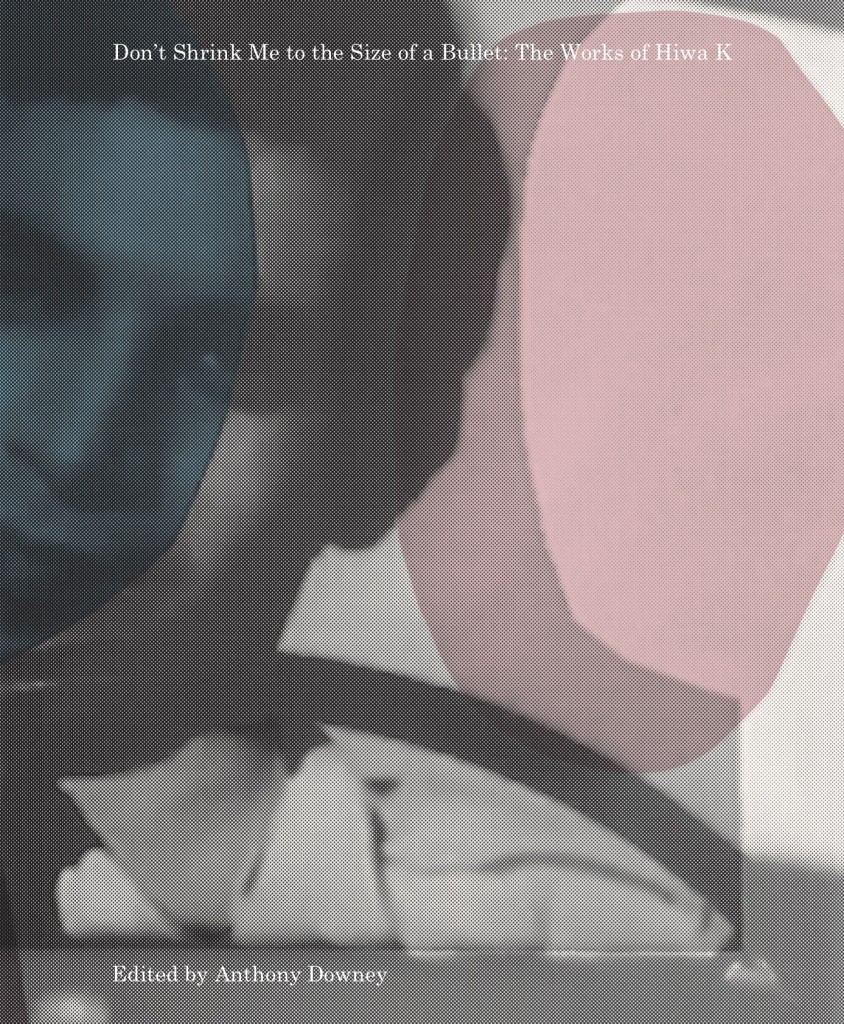
Don’t Shrink Me to the Size of a Bullet: The Works of Hiwa K
Edited by Anthony Downey.
Contributors: Lawrence Abu Hamdan, Natasha Ginwala, Bonaventure Soh Bejeng Ndikung, Aneta Szyłak, and Bakir Ali.
Publisher: Walther König Verlag.
Publication Date: May 31, 2017.
244 pp.
Colour illustrations.
Last time I saw my mom before my farewell, I said, “Mom, I am leaving for good. I don’t know… maybe I will not make it like the other 28 people who got shot last week” . She said “Son, if death comes, don`t panic. It is just death”.
Hiwa K, “Don’t Panic”, 2016
Covering over decade of projects, Don’t Shrink Me to the Size of a Bullet: The Works of Hiwa K provides the first comprehensive account of the artist’s practice to date. Edited by Anthony Downey, with a foreword by Heike Catherina Mertens and Krist Gruijthuijsen, the volume includes essays by Lawrence Abu Hamdan, Natasha Ginwala, Bonaventure Soh Bejeng Ndikung, Aneta Szyłak, and a conversation between the artist and Bakir Ali. A series of texts have been prepared and revised by the artist, and he has also included a collection of anecdotes that recount gossip, stories, jokes, personal insights, conundrums, and aphorisms garnered from multiple sources. These have all been translated into Kurdish for the first time. The volume is fully illustrated and will contain extended notes on the works.
To read Anthony Downey’s essay, “Unbearable States: Hiwa K and the Performance of Everyday Life”, see here
Don’t Shrink Me to the Size of a Bullet: The Works of Hiwa K was launched at KW (Berlin), 31 May, and Documenta 14 (Kassel), 11 June, 2017.
Buy the book here.
ISBN 978-3-96098-160-2
February 2017
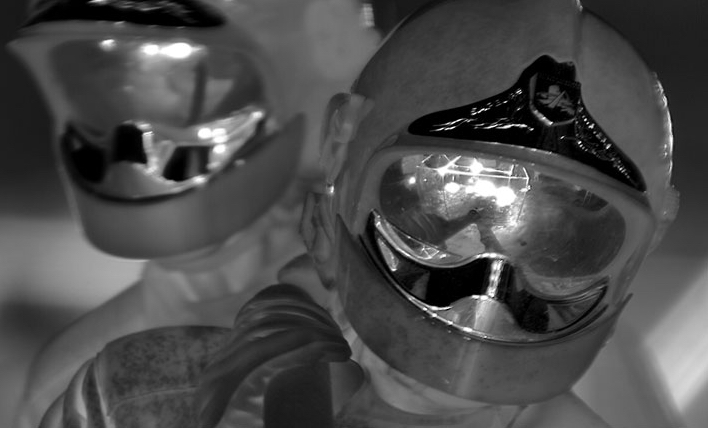
‘I see only from one point, but in my existence am looked at from all sides.’
– Jacques Lacan
“From the opening of Richard Mosse’s film Incoming (2016), it is evident that we are looking at something disturbingly vivid. Abstract images, grounded in a resounding radar-like echo, give way to the supersonic pitch of a strident, purposeful engine. A tenebrous image of a fighter jet strafing a town with laser-like intensity, its nose incandescent with heat as it fires round after round of needle-like missiles, appears almost languid and disconcertingly graceful in its livid ambit. An anti-aircraft gunfires back, no doubt in vain, at this incredibly fast moving object,while explosions are registered as bleached out columns of billowing phosphorescent light. Subsequent images show a ship boarding people from a rubber dinghy, their forms bleached out and spectral. Moments later, we see the irradiated deck of an aircraft carrier complete with fighter jets undergoingpreparation for imminent attack. This could be a video game or hell incarnate – or, potentially, both”.
To read full essay, please click here
To listen to Richard Mosse in conversation with Anthony Downey, Barbican Centre, 2017, please click here.
To purchase a copy of Richard Mosse, click here.